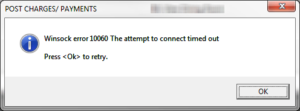
Currently we can create a disk that allows us to use different operating systems from a USB device on the same computer. Previously it was very difficult to perform this operation, but in this article we are going to teach you What steps should you follow to get a USB multiboot?.
Why create a USB multiboot?
With advances in technology, physical disks have been discontinued as often as before. They are only used for operating systems and to download videos, music or movies.
Today there is the possibility of download operating systems directly to the PC without having to have them on a diskSimply by means of a USB you can add everything you want and even add tools that improve the faults that our current system may present..
One of the the best known programs is Yumi, that being an application that can be installed on Windows it can also be run by Linux without any problem using Wine.
How do you create a USB multiboot?
In this part of the article we will explain in a simple way how to obtain a USB Multiboot and how to install various operating systems, thanks to the following steps:
1. Choose the software
It all starts with the multiboot menu that your computer has, namely, using a pendrive connected to a USB it is necessary to create several distributions, like Linux or Windows 10, and from its menu choose the system that you like the most without the need to use a hard disk.
There are countless programs, Here are some that will be of great help., What Yumi, SARDINIAN, Xboot, Easy2boot, among others.
We will start with SARDU, since it is very easy to use and adapts to other programs, giving you in-app access to as many ISO images as you want.
- To start you must download the program from the SARDU official website.
- Once installed, you will see a file called “sardu_3.zip”, that you must put into operation decompressing it with the 7-ZIP option.
2. Choose the operating systems
For it, you must see the programs available in SARDU, which are located on the left side, once chosen, install it on the USB device. The procedure to follow is the following:
- If you have chosen for example Linux, must click on your logo so you can choose the distributors you want to use.
- Keep that in mind each system has an ISO file, which forces you to install it first on a disk or USB.
- Once this is done, click on the arrow to be able to add it to your download list.
- Make sure you have downloaded the universal version of SARDU To make it work, for example, one possibility is through Ubuntu.
- When it's already downloaded, go back to the Linux list and press the red button choose the operating system to be able to search for it on the hard drive.
- You can change the name if you wish and that SARDU does not appear as such.
Another system that you can download through SARDU is Windows 10, to do this, look for its version in ISO, download its utility as a media creation tool and put it to work.
Another way is to select this option on another computer and click Next, so that it returns to an ISO file. Then go to your list, point to Windows and browse to the file on your hard drive, that when I select it, will be ready to go.
3. connect USB
Copy the chosen operating systems to the pendrive using the column on the right side of SARDU, soon search Search USB, select the device. Then go back to the column click Create SARDU USB, the installation will start there, which will take a few minutes.
4. USB Multiboot
In this step, you need to turn off the computer and then insert the USB, then continue with the following steps:
- When turning on the equipment press F11, or that key that starts your device on the computer.
- Ir SARDU menu and select the operating system.
- Then go to option boot and boot.
- The hard drive will be displayed first.
- Control the options with the arrow keys on the keyboard to order one system to boot from USB and one from the hard drive.
- Enter pulse, to save the changes and restart the computer.
5. Start Menu
When your computer starts to work with multiboot USB, find the menu and select your tools and systems, then check that they are there and then choose one, ya sea Linux o Windows 10.

The best programs to install a multiboot USB
To be able to operate the USB tiene que ser con un pendrive en formato Fat32The FAT32 file system (File Allocation Table 32) It is an evolution of FAT16, developed by Microsoft in the 1990s 1990. It is widely used in storage devices such as USB flash drives and external hard drives due to its compatibility with multiple operating systems., including Windows, macOS and Linux. FAT32 allows managing volumes of up to 2 TB and files up to 4 GB, which makes it an option.. More and also that the storage capacity is much larger than the downloaded file. Another requirement is that it has free space or at least that what it contains can be deleted, no need to format it. A) Yes, Let's see what programs are recommended for this type of action.
1. Yumi
Its main function is to have different operating systems and make them run whenever you want.. It is one of the most used, because allows downloading Windows 10, Ubuntu and also Windows XP.
In the same way you can also combine games or some programs from ISO images as your operating system. The same goes for Yumi once we open it we can choose in its menu the image that we want to execute and thus start the bootable USB.
2. Rufus
If your goal is to burn ISO to USB device for your Windows, This is the best option, as works with any system from Linux to MacOS. Once you acquire it, is available in spanish, no need to have a physical disk to install it, as it can be downloaded in the Portable version, you run it and ready to go.
You can also close it or in the last case delete said file, if you don't like it anymore. But if you keep working with him, when you open it you must choose a pendrive to connect it, then you will have to change the name and format it, since it will install a new operating system.
In the case of the ISO image, your software will load through a reader that has a CD icon, located on the right side at the end of the button where it says ISO image or ISO image.
3. UNetbootin
Over time it has become one of the oldest programs to create a USB multiboot, can be installed on windows, Linux y MacOs. Comes with infinite distributions, which are fully customizable with the ISO program, for example.
The way to use it is very simple, Well, once the program is open, you have to select any of its distributions and one of its versions.. On the other hand, if we want to install an ISO image what we must do is choose your file at the bottom and finally choose the connected USB.




